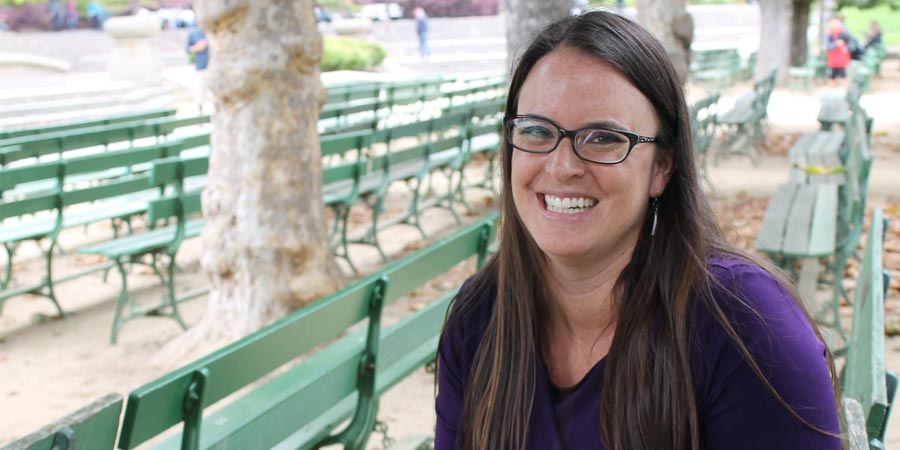
Twenty years after her corneal transplants, 32-year-old college counselor Stephanie Beaver Alder still marvels at how they changed her life.
From Struggling in School to a Career in Academia
When 32-year-old Stephanie Beaver Alder was a child, school was a challenge.
She couldn’t see the blackboard or her books clearly. She couldn’t play sports because she was clumsy and accident-prone due to having poor depth perception. She was in special reading programs because her teachers mistakenly thought she had learning disabilities.This was tough on Stephanie, but her grandparents would tell her not to cry. It wasn’t because they wanted her to be brave, but instead it had to do with the root cause of all these difficulties: Stephanie had a condition called herpes keratitis, a viral infection of the eye. Her grandparents worried that the crying could cause a flare-up that could have vision-threatening consequences.
How Herpes Affects the Eyes
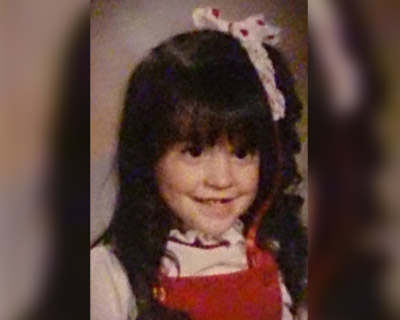
Stephanie was told not to cry as a child for fear that it could cause a flare up of her herpes keratitis.
Many people may be familiar with the form of herpes that can cause cold sores. What they may not know is that herpes can also attack the eye. This often causes minor problems. But, if the infection is left untreated or keeps recurring, it can seriously damage the cornea.
The cornea is the clear front window that covers the eye and allows it to focus. When damaged, the cornea will scatter light, instead of allowing it to go directly into the eye and make it focus. The damage can result in swelling or scarring. This can cause the cornea to become cloudy, rough or misshapen.
In the most severe cases, herpes keratitis can impair vision so badly that ophthalmologists – the medical doctors that specialize in medical and surgical eye care – will recommend that patients have a cornea transplant.
The World Comes into Focus
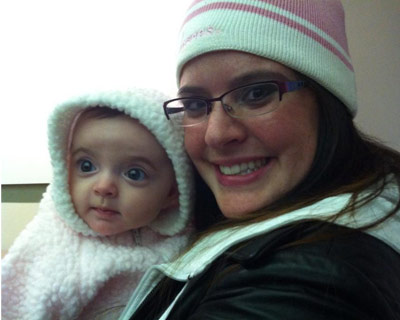
Stephanie with her daughter, Annabella.
Stephanie’s regular ophthalmologist referred her to Richard L. Abbott, MD, a cornea specialist and currently professor at the University of California, San Francisco.
Dr. Abbott explained to then five-year-old Stephanie that they would use an instrument that was like a cookie cutter to remove the damaged part of her cornea and replace it with a clear cornea that a person had donated.
“I never knew what colors really looked like. I had no idea that I had freckles or that leaves had veins.” – Stephanie Beaver Alder, whose vision was saved by corneal transplants
He performed two corneal transplants on Stephanie, one when she was about five and another when she was 11. A whole new world opened to Stephanie after the surgeries. Up until then, she never knew what life looked like to people with normal vision.
“I never knew what colors really looked like,” Stephanie said. “I had no idea that I had freckles or that leaves had veins.”
This new world also extended to the classroom and Stephanie’s ability to learn.
“All of a sudden, I could see words – not just faint scrawling on the board, but I could see letters and words,” Stephanie said.
“All of a sudden, I could see words – not just faint scrawling on the board, but I could see letters and words.” – Stephanie Beaver Alder
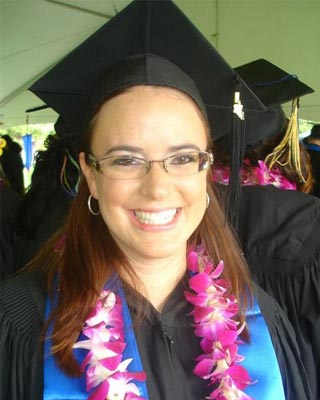
After having her corneal transplants, Stephanie vowed she would be the first in her family to go to college. She fulfilled that promise at the University of California, Davis.
“I developed this love of reading. I couldn’t put a book down," she added. "Then when I was in sixth grade, I decided I wanted to be the first person in my family to go to college and I just didn’t stop. I absolutely bloomed. I became a true nerd.”
Stephanie’s Life in Full Bloom
“What does sight mean to me? It means not just looking at things, but actually experiencing it. It represents living life to the fullest.” – Stephanie Beaver Alder
Stephanie did in fact accomplish the goal she set. She graduated college and went on to pursue a master’s degree. Today Stephanie is a college counselor, who encourages her students to follow their dreams and not take life for granted.
Being without sight taught Stephanie how important this is.
“What does sight mean to me? It means not just looking at things, but actually experiencing it. It represents living life to the fullest.”
In her spare time, Stephanie also runs half marathons and triathlons. She has come a long way from being the girl falling behind at school and picked last for team sports.
Ophthalmologists Change Lives
But Stephanie still remains in awe of the kindness of the ophthalmologists who treated her and understood the fear that medical facilities and procedures can instill in a young child.
“Your hands and someone who decided to be an organ donor are how I am able to see and experience the world the way I do,” she said. “My life has been changed in every way. Not just my vision, but everything. I just feel so grateful.” – Stephanie Beaver Alder
Stephanie, who now has a daughter of her own named Annabella, still remembers how, Dr. Abbott gave Stephanie a stuffed animal that he adorned with an eye patch after her first surgery. Stephanie instantly named him “Dr. Abbott Rabbit.”
Stephanie recalled this memory when she recently saw Dr. Abbott again for the first time in more than 20 years. It was an emotional reunion.
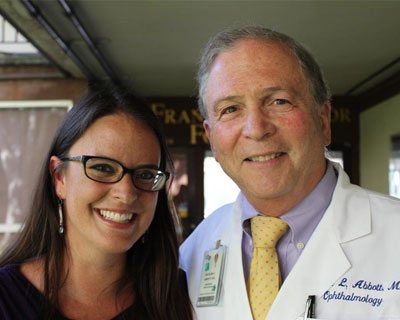
Stephanie with Dr. Abbott, who performed two corneal transplants on her as a child. Stephanie credits him for enabling her to live life to the fullest.
“Your hands and someone who decided to be an organ donor are how I am able to see and experience the world the way I do,” she said. “My life has been changed in every way. Not just my vision, but everything. I just feel so grateful.”
For Dr. Abbott, Stephanie’s experience is what his profession is all about.
“We’re so lucky to be ophthalmologists and to have the privilege of restoring eyesight in our patients,” he said. “It's why we do it. It's why we're all ophthalmologists.”
“We’re so lucky to be ophthalmologists and to have the privilege of restoring eyesight in our patients, It's why we do it. It's why we're all ophthalmologists.” – Richard Abbott, MD, who saved Stephanie's vision with corneal transplant surgeries
Stephanie is an example of the more than 50,000 people each year who have their sight restored thanks to the skill of cornea specialists like Dr. Abbott and the willingness of people to register as donors.
For more information on becoming an eye donor, visit the U.S. Department of Health & Human Services organ donation website.